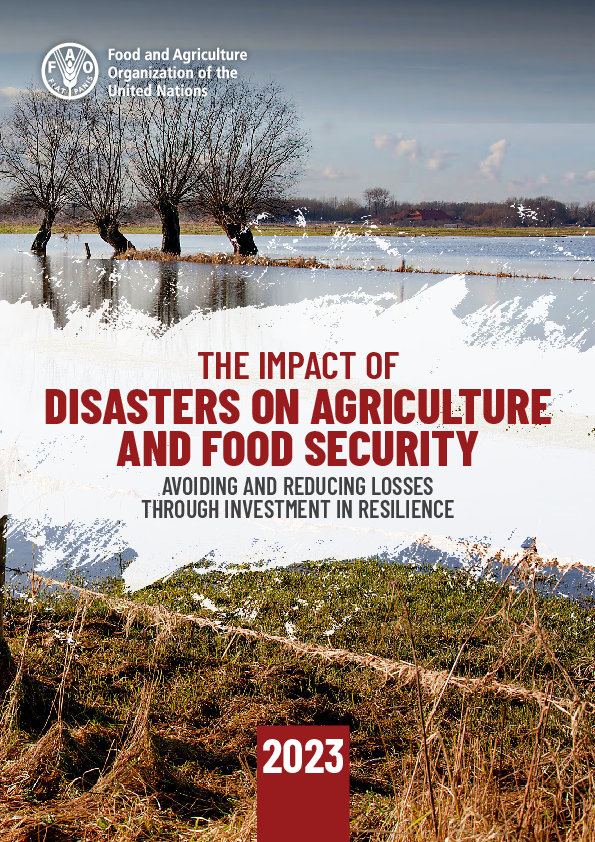 Read this article in French
Read this article in French- Share this article
- Subscribe to our newsletter
The impact of disasters on agriculture and food security
Over the last 30 years, an estimated USD 3.8 trillion in crops and livestock production has been lost due to disasters. This corresponds to an average loss of USD 123 billion per year or 5 per cent of annual global agricultural gross domestic product (GDP). The figure is reported in “The impact of disasters on agriculture and food security”, published by the Food and Agriculture Organization of the United Nations (FAO) in October 2023. The authors note that the estimate may have been even higher if systematic data on losses in the fisheries and aquaculture and forestry subsectors had been available.
The report reveals that over the last three decades, disasters – defined as serious disruptions to the functioning of a community or society – inflicted the highest relative losses on low-income and lower-middle-income countries, up to 15 per cent of their total agricultural GDP. Disasters also had a significant impact on Small Island Developing States (SIDS), causing them to lose nearly 7 per cent of their agricultural GDP.
Losses increasing
The report also indicates that losses in major agricultural products are increasing. Losses in cereals, for instance, amounted to an average of 69 million tonnes per year in the last three decades – corresponding to the entire cereal production of France in 2021. This was followed by fruits and vegetables, and sugar crops, with each approaching average losses of 40 million tonnes per year – equivalent to the total production of fruits and vegetables in Japan and Vietnam in 2021.
Meats, dairy products and eggs showed an average estimated loss of 16 million tonnes per year, corresponding to the entire production of these foods in Mexico and India in 2021.
Disaster events have increased from 100 per year in the 1970s to around 400 events per year worldwide over the past 20 years. Not only are disasters increasing in frequency, intensity and complexity but their impact is also expected to worsen, as climate-induced disasters amplify existing social and ecological vulnerabilities.
Disaster risk reduction needed in farms
Farmers, particularly smallholders who depend on rain-fed agriculture, are the most vulnerable actors in agrifood systems and bear the brunt of disaster impacts. By adopting good practices in disaster risk reduction, small-scale farmers can avoid losses and become more resilient.
Proactive and timely interventions in response to forecasted hazards can build resilience by preventing and reducing risks in agriculture. For instance, anticipatory action taken in several countries demonstrated favourable benefit-cost ratios. The report shows that, for every USD 1 invested in anticipatory action, rural families can gain up to USD 7 in benefits and avoided agricultural losses.
The report outlines three key priorities for action: improving data and information on the impacts of disasters on all subsectors of agriculture – crops, livestock, fisheries and aquaculture, and forestry; developing and mainstreaming multisectoral and multi-hazard disaster risk reduction approaches in policy and programming at all levels; and enhancing investments in resilience that reduce disaster risk in agriculture and improve agricultural production and livelihoods.
(FAO/ile)
Read more and download the report on the FAO website





Add a comment
Comments :